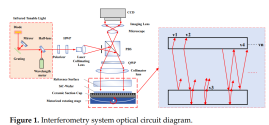Huahai Qingke's 12-inch thinning and film laminating machine Versatile-GM300 is shipped in batches to leading domestic semiconductor companies
Recently, the 12-inch thinning and film bonding machine Versatile-GM300 independently developed by Huahai Qingke Co., Ltd. (referred to as "Huahai Qingke") has achieved batch shipments and has been continuously shipped to many leading domestic semiconductor companies. This marks that the equipment has officially entered the stage of large-scale application, injecting new momentum into the domestic high-end semiconductor packaging field.

Versatile-GM300 integrates the functions of grinding and thinning, polishing to relieve stress, stripping protective film and pasting dicing film, realizing full-process automation, significantly reducing the risk of processing damage, and improving efficiency and yield. The equipment can perform ultra-thin processing on Single Wafer, and is perfectly compatible with the two mainstream advanced packaging process routes of Wafer to Wafer (W2W) and Die to Wafer (D2W), providing a reliable and flexible solution for the last backside thinning process before product packaging.
At present, Versatile-GM300, together with Huahai Qingke's independently developed edge trimming machine Versatile-DT300 , thinning and polishing all-in-one machine Versatile-GP300 , and CMP series equipment Universal-300 Dual/X/T, form a complete set of 3D IC solutions , which can better meet the urgent needs of cutting-edge technology fields such as AI chips, HBM (high bandwidth memory) stacked packaging, and Chiplet (core particle) heterogeneous integration.

The successful mass production and sales of Versatile-GM300 is an important achievement of Huahai Qingke's continuous deepening of the "equipment + service" platform development strategy, which effectively fills the key link of the domestic integrated circuit industry chain. In the future, Huahai Qingke will continue to uphold the corporate spirit of "self-reliance to achieve excellence and innovation to shape the future", and is committed to providing customers with more efficient and advanced semiconductor complete solutions, actively developing new quality productivity through technological innovation, and promoting the high-quality development of China's semiconductor industry.



